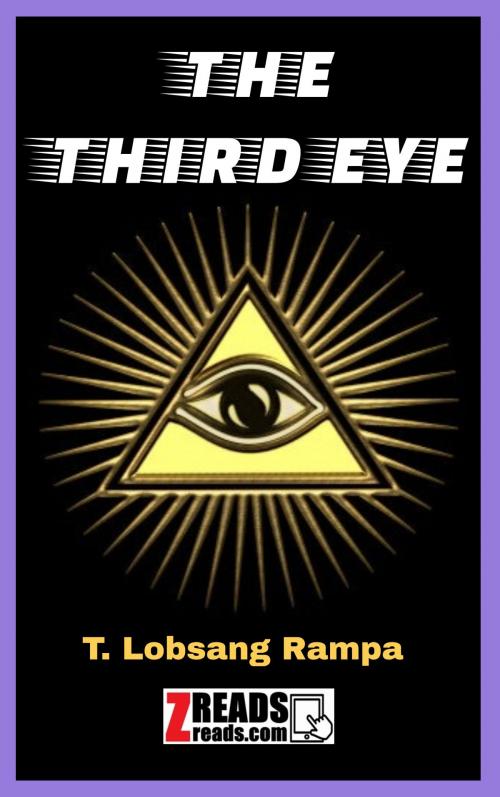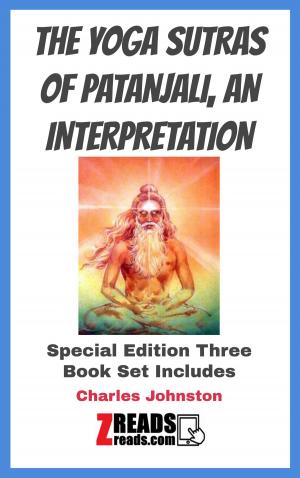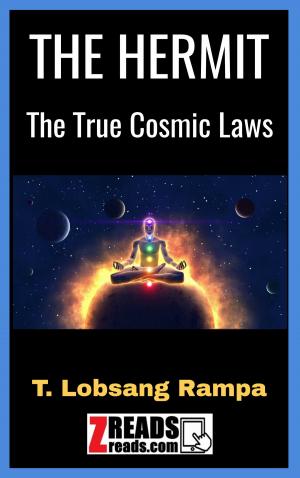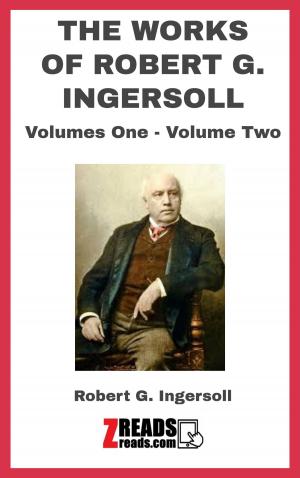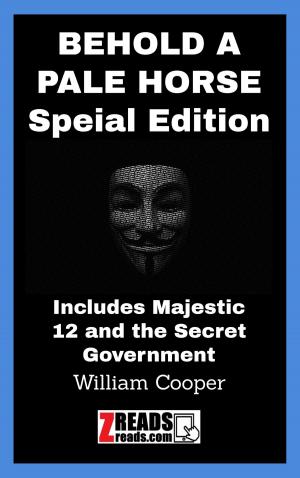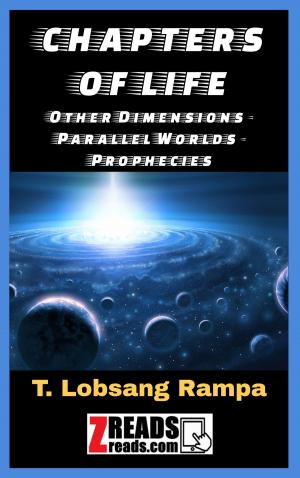THE THIRD EYE
Nonfiction, Religion & Spirituality, Middle East Religions, Zoroastrianism, New Age, Mental & Spiritual Healing, Meditation| Author: | T. Lobsang Rampa, James M. Brand | ISBN: | 1230003093863 |
| Publisher: | ZREADS | Publication: | February 20, 2019 |
| Imprint: | Language: | English |
| Author: | T. Lobsang Rampa, James M. Brand |
| ISBN: | 1230003093863 |
| Publisher: | ZREADS |
| Publication: | February 20, 2019 |
| Imprint: | |
| Language: | English |
THE THIRD EYE
T. Lobsang Rampa
Synopsis
T. Lobsang Rampa was preordained to be a Tibetan priest, a sign from the stars that could not be ignored. When he left his wealthy home to enter the monastery, his heart was filled with trepidation, with only a slight knowledge of the rigorous spiritual training and physical ordeal that awaited him . . . .
This is his story, a hauntingly beautiful and deeply inspiring journey of awakening within Chakpori Lamasery, the temple of Tibetan medicine. It is a moving tale of passage through the mystic arts of astral projection, crystal gazing, aura deciphering, meditation, and more, a spiritual guide of enlightenment and discovery through the opening of the all-powerful, the all-knowing.
In November 1956 a book called The Third Eye was published in the United Kingdom. It was written by a man named Tuesday Lobsang Rampa, and it purported to relate his experiences while growing up in Chakpori Lamasery, Chokpori, Tibet, after being sent there at the age of seven. The title of the book is derived from an operation, similar to trepanation, that Rampa claimed he had undergone, in which a small hole was drilled into his forehead to arouse the third eye and enhance powers of clairvoyance. The book describes the operation as follows:
The instrument penetrated the bone. A very hard, clean sliver of wood had been treated by fire and herbs and was slid down so that it just entered the hole in my head. I felt a stinging, tickling sensation apparently in the bridge of my nose. It subsided and I became aware of subtle scents which I could not identify. Suddenly there was a blinding flash. For a moment the pain was intense. It diminished, died and was replaced by spirals of colour. As the projecting sliver was being bound into place so that it could not move, the Lama Mingyar Dondup turned to me and said: "You are now one of us, Lobsang. For the rest of your life you will see people as they are and not as they pretend to be."
During the story, Rampa sees yetis and eventually encounters a mummified body of himself from an earlier incarnation. He also takes part in an initiation ceremony in which he learns that during its early history the Earth was struck by another planet, causing Tibet to become the mountain kingdom that it is today.
The manuscript of The Third Eye had been turned down by several leading British publishers before being accepted by Secker and Warburg for an advance of £800 (£20,000 today). Fredric Warburg of Secker and Warburg had met the book's author, who at the time appeared in the guise of "Doctor Carl Kuon Suo". Intrigued by the writer's personality, Warburg sent the manuscript to a number of scholars, several of whom expressed doubts about its authenticity. Nevertheless, the book was published in November 1956 and soon became a global bestseller. The Times Literary Supplement said of the book: "It came near to being a work of art."[2]
File information:
File size (Digital) (5.5bMB)
Books (1)
Biography (Yes)
Images/illustrations (yes)
Working table of contents (Yes)
Page count (8.5x11) (193)
Word count (81,722)
Font size (12pt)
Originally published (1956)
Republished (2019)
THE THIRD EYE
T. Lobsang Rampa
Synopsis
T. Lobsang Rampa was preordained to be a Tibetan priest, a sign from the stars that could not be ignored. When he left his wealthy home to enter the monastery, his heart was filled with trepidation, with only a slight knowledge of the rigorous spiritual training and physical ordeal that awaited him . . . .
This is his story, a hauntingly beautiful and deeply inspiring journey of awakening within Chakpori Lamasery, the temple of Tibetan medicine. It is a moving tale of passage through the mystic arts of astral projection, crystal gazing, aura deciphering, meditation, and more, a spiritual guide of enlightenment and discovery through the opening of the all-powerful, the all-knowing.
In November 1956 a book called The Third Eye was published in the United Kingdom. It was written by a man named Tuesday Lobsang Rampa, and it purported to relate his experiences while growing up in Chakpori Lamasery, Chokpori, Tibet, after being sent there at the age of seven. The title of the book is derived from an operation, similar to trepanation, that Rampa claimed he had undergone, in which a small hole was drilled into his forehead to arouse the third eye and enhance powers of clairvoyance. The book describes the operation as follows:
The instrument penetrated the bone. A very hard, clean sliver of wood had been treated by fire and herbs and was slid down so that it just entered the hole in my head. I felt a stinging, tickling sensation apparently in the bridge of my nose. It subsided and I became aware of subtle scents which I could not identify. Suddenly there was a blinding flash. For a moment the pain was intense. It diminished, died and was replaced by spirals of colour. As the projecting sliver was being bound into place so that it could not move, the Lama Mingyar Dondup turned to me and said: "You are now one of us, Lobsang. For the rest of your life you will see people as they are and not as they pretend to be."
During the story, Rampa sees yetis and eventually encounters a mummified body of himself from an earlier incarnation. He also takes part in an initiation ceremony in which he learns that during its early history the Earth was struck by another planet, causing Tibet to become the mountain kingdom that it is today.
The manuscript of The Third Eye had been turned down by several leading British publishers before being accepted by Secker and Warburg for an advance of £800 (£20,000 today). Fredric Warburg of Secker and Warburg had met the book's author, who at the time appeared in the guise of "Doctor Carl Kuon Suo". Intrigued by the writer's personality, Warburg sent the manuscript to a number of scholars, several of whom expressed doubts about its authenticity. Nevertheless, the book was published in November 1956 and soon became a global bestseller. The Times Literary Supplement said of the book: "It came near to being a work of art."[2]
File information:
File size (Digital) (5.5bMB)
Books (1)
Biography (Yes)
Images/illustrations (yes)
Working table of contents (Yes)
Page count (8.5x11) (193)
Word count (81,722)
Font size (12pt)
Originally published (1956)
Republished (2019)
